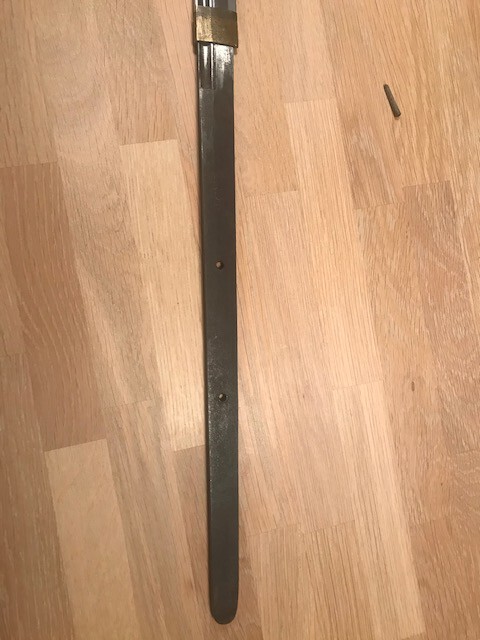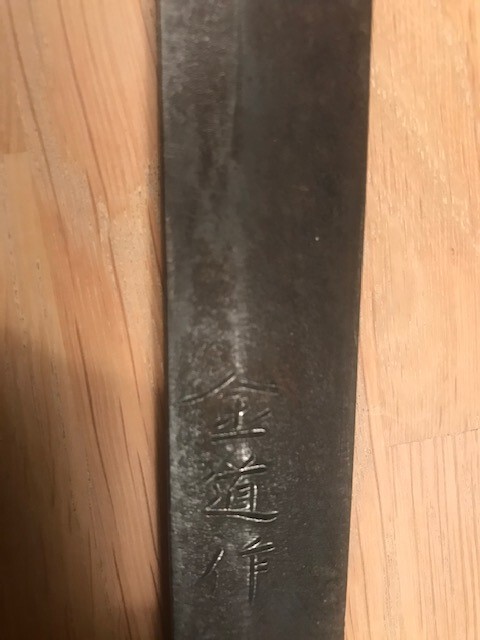Search the Community
Showing results for tags 'naginata'.
-
So, as I mentioned on another thread, I recently bought the book 槍薙刀入門 (Introduction to the Yari and Naginata) - in an attempt to find a better / more authoritative reference than most of the English speaking (especially web) sources. So far: 1. The book very clearly makes no distinction between Naginata and Nagamaki etc. The latter, as often explained, is just a koshirae choice. It goes on to talk about _naka_maki (where only the central part of the tsuka is wrapped) and a few other types - but the takeaway is basically any long sword, on a long pole is a Naginata. 2. Heian to Kamakura, Naginata were considered to be powerful battlefield weapons, with nagasa up to 5 shaku, with examples of a 3 shaku blade being referred to as a ko-naginata (small naginata). 3. From the Nambokucho period, the wide body / bulging head / strong curvature style appeared, and generally became more ostentatious. By the Muromachi period, the large naginata of the previous period disappeared. 4. From the Momoyama period, sizes became more "usual" (it doesn't state exact what size this is, so I'm inferring around 2 shaku?). It also says shorter works, around 1 shaku and 2-3 bu were produced as "wives Naginata". 5. During the Edo period, Naginata became more popular among women and children of samurai families rather than samurai. It also says that Naginata were always carried as part of a wedding ceremony (in some sources, as part of a dowry). 6. Towards the end of the Edo period is considered to be a renaissance period, where Naginata from around the Nambokucho period were reproduced. All the above is subject to only coming from a single source, and may be victim to my translation abilities. If I get time later, I'll post some of the original Japanese (subject to fair-use of copyright limitations).
-
I've spent the last year working on tsuka and saya making for katana, but I would like to learn more about naginata I've obtained a few naginata, one of which I'm looking to fit with koshirae, so I have a couple questions about how the pole is made: 1.) How were the fittings fixed to the pole 2.) What kind of seppa were used on a naginata 3.) Does anyone know any sources where I can purchase naginata parts (koshirae) I've found this is a somewhat obscure weapon, and instruction on how they are made/how the pole and saya are made are either non exist, or at least vastly more rare than any information on katana. Thank you.
-
Hi, Is there anyone in the UK who can restore the Mother of Pearl inlay in my naginata poles? Preferably within reasonable driving distance of London as I'd prefer not to post/courier if possible. Grateful for any pointers. Many thanks. Roy
-
Hi, I would be grateful for the community's thoughts. A friend kindly translated the mei (Fujiwara Naoshige) and date (1665) on my naginata, as shown in the photos. However, ref. Markus Sesko and Nihontoclub (screenshots), the style of the mei ("Oite Nan Ki Fuji Wara Nao Shige") seems to indicate the Nidai smith (Hoei 1704-1711). If mine is dated Kanbun 1665, it should be the Shodai smith (1661-1673) and it seems the style of the mei should be "Ki Shu Ju Fuji Wara Nao Shige Saku" Does this make it more likely to be gimei, or is there a reasonable explanation for the inconsistency? Many thanks for your help. Roy
-
Dear Group I am trying to identify a signature on a naginata and I would like to ask if anybody in this forum have signed items with papers, having “Kinmichi saku” at least as a part of the name or know if other Kinmichi-smiths than Iga-no-kami Kinmichi used a “Kinmichi saku” signature. The signature on the naginata says “Kinmichi saku”, but this is not listed in the sources I have access to. The naginata was until 2006 in the collection of a well known Scandinavian collector and Nihonto-expert and had paper/certificate. The paper/certificate has since then unfortunately been lost but a later owner remember that it should be from around 1600 and of high quality. That fits with 1st gen. Iga-no-kami Kinmichi, but other Kinmichi may have used the signature too… I found one source telling that Shodai Iga-no-kami Kinmichi used “Kinmichi saku” (at least once). His earliest dated work is dated Tensho 9 (1581), with said signature, see page 2. ( https://www.touken.or.jp/Portals/0/pdf/english/tobi_translation/753_NBTHK_October_2019.pdf ). If anybody has signed items with papers (or other information about "Kinmichi saku") would I be very grateful for any information and a photo of the signature/tang for comparison. Best wishes from Denmark Kasper
-
I acquired this recently and think it is very cool! Its got rust, pits, discoloring, and I don't care! I like it and think its quite amazing to be able to have an item like this. If you have an opinion, tell me the truth. You won't hurt my feelings. I know its in poor condition compared to some of the blades I see on this site.


















